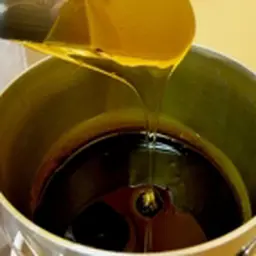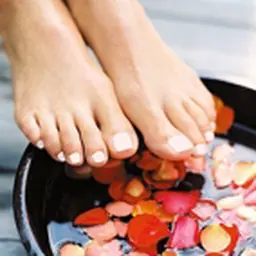
The autumn season is here: the sun goes down earlier, the ground is strewn with tree leaves, and temperatures are falling. Gloves, scarves, and coats are basics to brave the cold, but what about the mouth? This sensitive part directly exposed to the cold also suffers. Of course, to protect it, you can always cover your face and look like a ninja… otherwise we have a few tips for you to take care of it.
The skin is very thin on the lips. Contrary to the rest of the body, it is devoid of any sebaceous and sudoriparous glands, which means it does not produce any hydrolipidic film, so it cannot naturally hydrate.
As a result, the mouth is sensitive to the factors that trigger or accelerate the drying process like the cold, the wind, or too high temperatures.
When the lips get damaged, the reactions are instantaneous: tightness, tingling, small white pieces of skin, or cracks. Although we are familiar with them (who has never had chapped lips at least once in their lives?), these symptoms should be taken seriously, because they can turn into cracks and favour the proliferation of bacteria like herpes.
How to adopt the right routine
For healthy lips, try and adopt a few habits:
• Use a lip balm: it is a must-have during the winter season. It forms a barrier against aggressions, soothes cracks at the lip surface, and accelerates the healing process.
• Limit the use of drying cosmetics: although matte lipsticks are trendy, this type of products should not be applied on a daily basis, since they favour dryness.
• Thoroughly cleanse your skin: before you go to bed, remove all makeup traces. Be careful not to use too abrasive products! Cleansing oil is recommended for gentle cleansing.
• Exfoliate your skin: that is the perfect solution to remove dead skin. Do not do it more than once a week, though, otherwise you will irritate the area. Lip scrubs are available on the market, but a face product will do.
• Use a repairing mask before going to bed: the ideal moment to enhance the healing process is at night, when you are lying in your warm sheets, far from external aggressions. Just apply a bit of cold cream on your lips and at the corners of your mouth.
How to choose the right products
To choose the best lip care product, pay attention to the ingredients contained in the formula. A balm worthy of its name should contain efficient repairing agents and quality fatty acids.
In addition, its composition should be 100% safe, since you will obviously swallow a bit of product… very little, of course, but still.
As a matter of fact, if they all look alike, lip sticks and balms can have very different formulas. They all require fats with a firm consistency to shape the stick: these can be natural (hydrogenated vegetable oils and waxes, for example), but they can also be mineral oils derived from the petrochemical industry, whose potential dangerousness has recently been denounced – again.
As regards this issue, La Roche-Posay laboratories explain that the mineral oils used in their products do not pose any risk for the body, because ‘the cosmetics industry requires the selection of purified ingredients for lip products, in accordance with international pharmaceutical and food specifications. The vegetable or mineral oils used by La Roche-Posay undergo extensive tests and all oral bioavailability studies confirm these ingredients are absolutely safe, even after repeated use.’ They add that ‘it is not that easy to formulate a lip balm. The complexity comes from the use of many lipophilic materials, in particular oils that can become oxidized or go rancid. The choice of ingredients is based on their perfect safety, even in case of ingestion, given the area of use.’
Lastly, to guarantee a quality product, the selection of raw materials should be rigorous. The brand’s formulators explain that ‘there are many alternatives available for fats. It depends on the texture wanted and the final form of the product (balm, stick). Generally speaking, we need waxes to give the formula some substance, fats to provide softness and melting properties, and soothing, repairing, protective actives to enrich the base. The La Roche-Posay Cicaplast Lèvres lip stick has a high content of shea butter and beeswax and also contains a vegetable oil derivative. It is enriched in soothing, repairing Panthenol or vitamin B5 (dose active at 5%), and its minimalist formula is suitable for children and the most weak, chapped, and dried lips.’
Shirley Billot, founder of Kadalys, the natural cosmetics brand behind Baume Banane, explains that the difficulty to formulate a green lip balm lies in the ‘impossibility to use petroleum-derived oils, although they are useful for this type of application. We need to find as efficient substitutes that provide the same result and comfort. Since the lip skin does not secrete sebum, we need fats to nourish and protect it from external aggressions: it is essential to use natural emollients to soften, hydrate, and make the skin suppler.
At Kadalys, we design our formulas with banana oil, which is rich in repairing phytosterols, and castor oil. They are ideal to nourish and repair the skin, but also to make the product last longer. We also have a strict process to select natural waxes and vegetable oils. Our little trade secret lies in the addition of stevia, a sweetener with a sweetening power used for the taste.’
Keeping healthy lips does not just involve adopting appropriate cosmetics gestures. Drink water all day, eat varied food rich in vitamins, do not smoke, avoid any prolonged sun exposure without lip protection, and do not wet your lips all day long – wetting combined with the cold reinforces dryness… all these parameters should be taken into account.
JS













